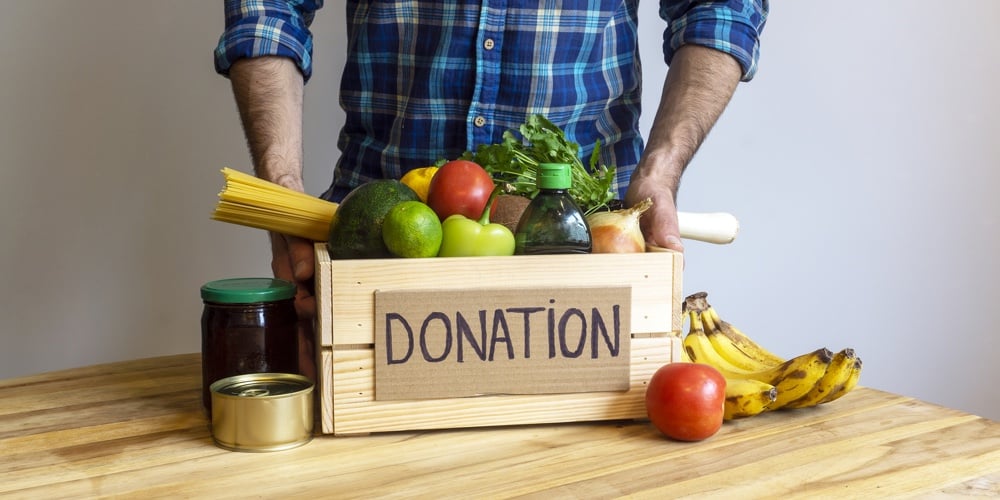How food insecurity is spreading during COVID-19 pandemic, and what CUs should do about it

The COVID-19 pandemic has amplified many of the vulnerabilities that exist in communities across the country. Food insecurity is atop this list as more Americans are looking for ways to gain access to affordable food.
No matter the social or economic reasons a person finds themselves in a state of food insecurity, the results of stress and poor nutrition are always the same. Food insecurity forces people to make tough choices between purchasing food or paying for things like medical care or utility bills. Recently, the Washington Post reported that stimulus checks have been largely used to purchase food. While people choosing to spend money on key needs may not come as a shock, it should sound an alarm for credit unions as we consider how many Americans were food insecure prior to COVID-19 and how this situation is impacting their financial well-being.
Food banks are facing an increase in demand, decrease in donations
With millions of Americans filing for unemployment or working reduced hours, food insecurity is on the rise. The demand for food banks and pantries has skyrocketed over the past few weeks. Stories, such as this one from San Antonio, tell of the thousands lining up for emergency food aid. According to a survey conducted by Feeding America, the nation’s largest domestic hunger-relief organization, 95 percent of food banks reported higher operational expenses and 37 percent reported an immediate critical funding shortfall. Food donations are also down as people stockpile supplies during lockdown and many restaurants which would normally donate perishables are now closed.
Furthermore, nearly 1 in 6 children in the US are food insecure. Many families rely on their children having access to free or reduced-price lunches at school throughout the year. Long-term school closures have impacted this access and while there are some very effective programs that are rising to meet this challenge, there are many children who are living outside of program service areas and continue to be impacted.
Credit unions’ roots in combating hunger
Throughout history, credit unions have thrived by serving the unique needs of their members and communities. In 1850, the first credit union was created in Germany to help those facing hard times due to crop failure and famine. Since then, credit unions have found success by being a source of affordable credit, combating poverty, and helping people avoid food insecurity.
The National Credit Union Foundation’s DE Program explores a number of development issues, including hunger, that serve as barriers to the prosperity and financial well-being of members. While we may not have products and services directly associated with food assistance, hunger and finances are intrinsically linked.
Through our programming we have been fortunate to work with many credit union leaders who are working to combat hunger in their communities. Here is a list of tips to help make a difference for people experiencing food insecurity:
- Discover What Food Insecurity Looks Like in Your Community. Feeding America has a ton of resources on food insecurity and data that drills down to state and county levels. Additionally, you can find out if any food deserts – areas where people lack access to affordable or healthy food sources – exist within your field of membership by using USDA’s Food Access Research Atlas. These resources might reveal opportunities for your credit union to plug-in to local efforts and educate employees on what members might be facing.
- Research, Share, and Provide Food Assistance Resources. What food banks and pantries or other resources exist within your community? What could you offer at your own credit union? Credit unions are encouraged to compile food assistance resources (along with other local charities and non-profits) in a way that can be shared with members and employees as needed. Do not overlook the fact that some of your own staff may be food insecure. Consider providing or promoting food assistance programs internally and creating a trusted environment for employees to share and seek help confidentially.
- Practice Active Listening & Empathy. People struggling with food insecurity often feel shame or embarrassment for their situation even if it isn’t visible. Practicing empathy during member interactions may help someone feel comfortable to talk about an issue that doesn’t involve an account balance. Helping a member through a transaction is expected, but helping to connect them with food assistance would truly be a memorable service experience.
- Contribute Resources to support Food Banks and Pantries. As COVID-19 continues to impact donations and volunteer numbers, many non-profits are in need of additional support. In order to stay in operation, food banks and pantries still need healthy, low-risk volunteers and partnerships that will help to purchase bulk food and other items at lower price points. Credit unions should reach out to learn how to best help during this time.
As more people are impacted by the pandemic and face financial uncertainty, credit unions must encourage the practice empathy and look for ways to help people who need access to affordable food. It’s not just a return to our roots, but a way to evolve our role as financial institutions into trusted community partners that truly put the needs of our members and communities first.





